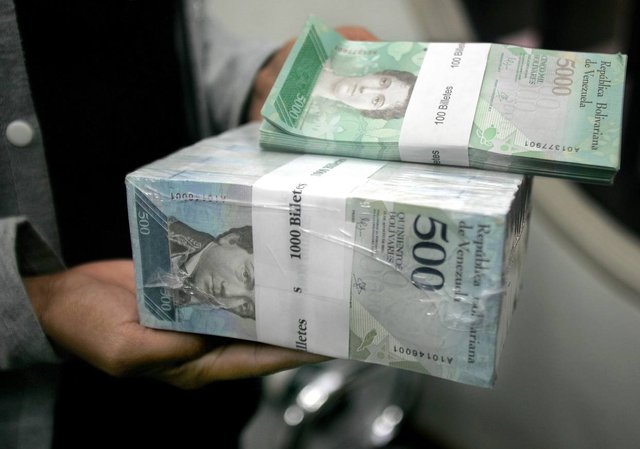The tunnel of hyperinflation in Venezuela

The bad economic policies of the Bolivarian revolution took Venezuela to the pit of hyperinflation, although many say that it still does not hit bottom, I agree that the financial crisis is likely to become more acute every day, leaving Venezuelans poorer and more submissive. main strategy of the dictatorship.
The high value of prices and the brutal increases in recent months are due to hyperinflation, a dark area of the economy and daily life of societies that a handful of countries have suffered for a century, including several neighbors of Latin America where there was, as in Venezuela, a corrupt management of fiscal accounts and the issuance of money without economic backing that quickly lost value and that everyone sought to get rid of before prices escalated more and more. To tackle this perverse process, stabilization programs were necessary.
Venezuelan inflation in 2017, even without the figures of the Central Bank that never publishes them in passing, was 2,616%, according to the Economy Commission of the National Assembly. The firm Ecoanalítica estimated it at 2.735% in October when monthly inflation was higher than 50%, a level recognized by scholars of the economy, for 60 years, to mark the entry of a country into the tunnel of hyperinflation: an inflation which is not only very high but also progresses rapidly, destroying the purchasing power of the currency.
Although hyperinflation is denominated as episodes in which the inflation rate exceeds 50% in a month, many experts consider that there are hyperinflationary episodes when it is high and it accelerates continuously, even if the monthly rate does not reach 50% but the annual rate exceeds 100% for three or more consecutive years. The hyperinflation reflects the rejection of the population by the local money, and it is of cajón because here in Venezuela the majority wants to have a different currency to the bolivar be dollars, preferably euros and in other cases up to gold.
Venezuela had its last year of inflation with only one digit (6.2%) in 1983; between 1984 and 2012, it averaged 32% per year; in 2013 it reached 56.2%, in 2014 it was 68.5% and in 2015, the last year with figures from the BCV, it was officially placed at 180.9%. For 2016, independent economists estimated it at 550% and, after the shooting of 2017, black omens appear for the year to come.
Then due to the emission of inorganic money (without support in the real economy) the monetary liquidity in Venezuela went from 2 trillion bolivars in 2015 to 10.4 trillion at the end of 2016 and 127.3 trillion at the end of 2017, with increases of up to 16% in a single week. meanwhile, the economy did not grow: the gross domestic product (totalization of goods and services produced during a year) was 35% below last year's 2014 and the government reported that in 2016 alone there was a contraction of 16% of GDP.
All this means that the economic deficiency reflects that the poor are the most affected by hyperinflation. While the less poor and the rich can rebuild their assets and savings, those who depend only on their salary see their purchasing power diminished rapidly. because the real ones do not even have enough to eat, and then the mature regime tries to solve the problem with a wage increase that is useless, especially if that increase is financed with inorganic emission.
But they do not understand the economy or the assholes become a whole cycle, in which Venezuelans continue to be poorer and increasingly dependent on what the dictatorship of mature can give them.
And the reality is that prices will always increase faster and the purchasing power of the poorest will continue to decline.